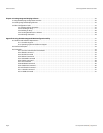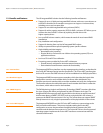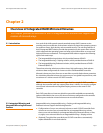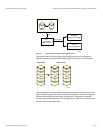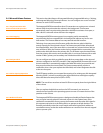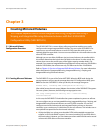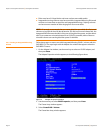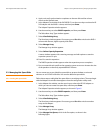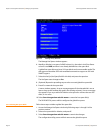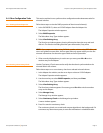
Chapter 2: Overview of Integrated RAID Mirrored Volumes | Mirrored Volume Features SAS2 Integrated RAID Solution User Guide
Page 12 LSI Corporation Confidential
| August 2010
2.4.6 Disk Write Caching By default, the Integrated RAID firmware disables disk write caching for mirrored
volumes. It does this to ensure that the write journal entry stored in nonvolatile static
RAM (NVSRAM) is always valid. If you enable disk write caching (not recommended),
you may cause the disk write log to be invalid.
2.4.7 NVSRAM Usage The Integrated RAID firmware requires at least a 32-KB NVSRAM to perform write
journaling for mirrored volumes on LSI SAS2 controllers. The NVSRAM also preserves
configuration information across reboots. The firmware uses write journaling to verify
that the disks in the mirrored volume are synchronized with each other.
2.4.8 Background Initialization Background initialization (BGI) is the process of copying data from primary to
secondary disks in a mirrored volume. The Integrated RAID firmware starts BGI
automatically as a background task when it creates a volume. The volume remains in
the Optimal state while BGI is in progress.
2.4.9 Consistency Check A consistency check is a background process that reads data from primary and
secondary disks in a mirrored volume and compares it to make sure the data is identical
on both disks. You can use the LSI SAS2 BIOS Configuration Utility to run a consistency
check on a mirrored volume.
2.4.10 Make Data Consistent If it is enabled in the Integrated RAID firmware, the make data consistent (MDC) process
starts automatically and runs in the background when you move a redundant volume
from one SAS controller to another SAS controller. MDC compares the data on the
primary and secondary disks. If MDC finds inconsistencies, it copies data from the
primary disk to the secondary disk.



